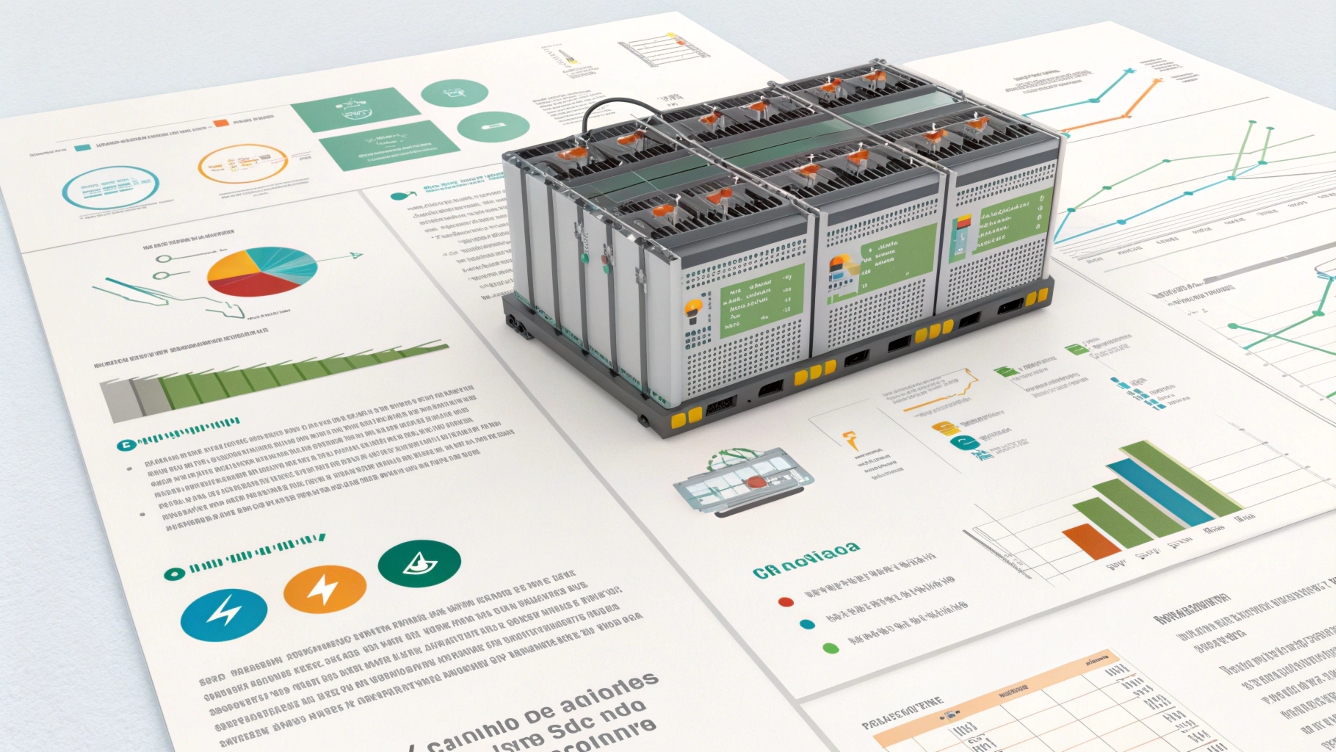Comprendere il costo per caricare una batteria da 40kWh: Approfondimenti per i sistemi di batterie al litio a montaggio di rack
La carica di una batteria da 40kWh può essere una parte significativa della tua strategia di gestione dell'energia. In questa guida completa, Esploriamo i fattori che determinano il costo per caricare una batteria da 40kWh e discutiamo i vantaggi dei moderni sistemi di batterie, specialmente batteria al litio per montaggio su rack Soluzioni: per lo stoccaggio di energia commerciale e residenziale. Sia che tu stia valutando opzioni di energia rinnovabile o stai cercando un'energia di backup efficiente, Comprendere queste sfumature è la chiave.
I dati tecnici e i principi di progettazione citati in questa guida sono corroborati dagli standard del settore e riassunti su Wikipedia Batteria agli ioni di litio pagina.
introduzione
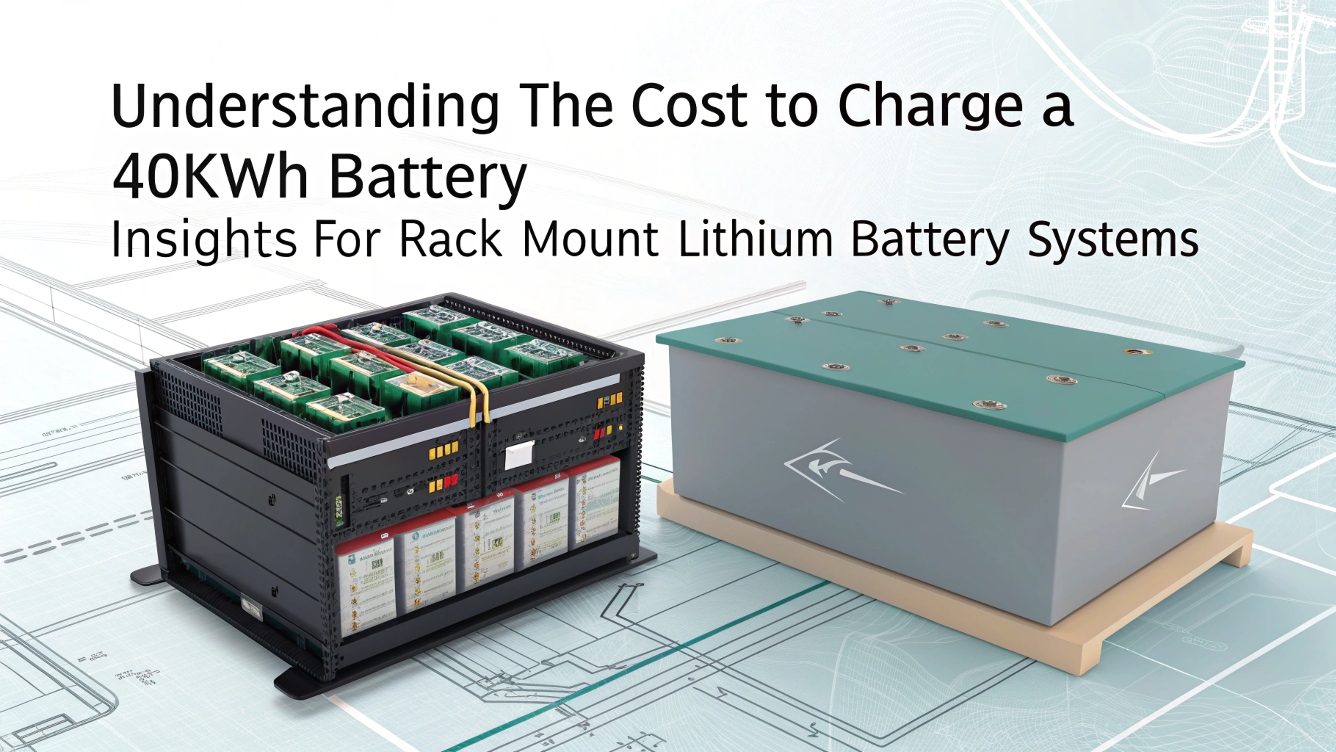
Per molti, L'idea di caricare una batteria di grandi dimensioni, come una con una capacità di 40 kWh, fa domande sull'efficienza dei costi e sulla gestione dell'energia. Il costo di ricarica non è solo una questione di quanti kilowatt ore (kWh) La batteria può archiviare, ma anche di fattori come i tassi di elettricità, Efficienza di ricarica, e le caratteristiche tecniche del sistema della batteria.
A GYCX solare, Il nostro obiettivo è quello di fornire avanzato, Prodotti a batteria di alta qualità come batteria al litio per montaggio su rack sistemi. Questi sistemi sono progettati per massimizzare l'efficienza energetica, facilitare l'installazione, e offrire una solida scalabilità. In questo articolo, Abbatteremo i conducenti di costo, Confronta vari progetti di sistema, e fornire approfondimenti pratici per aiutarti a valutare l'aspetto finanziario della carica di una batteria da 40kWh.
Ciò che determina il costo di ricarica di una batteria da 40kWh?
Comprendere il costo per caricare una batteria da 40kWh richiede un approccio multiforme. Diversi fattori entrano in gioco:
1. Tassi di elettricità e costi energetici
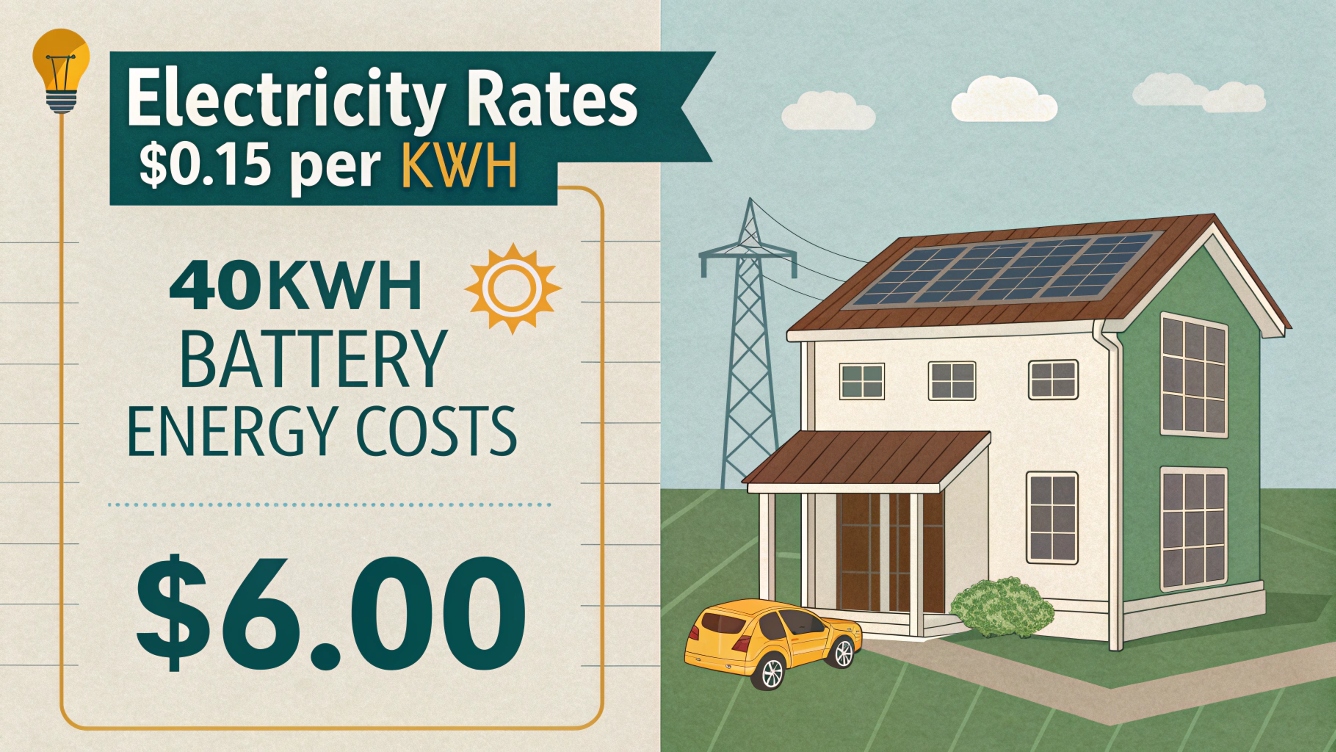
Il primo e più ovvio fattore è il costo per chilowattora addebitato dal tuo fornitore di utilità. I tassi di elettricità variano ampiamente per regione, ora del giorno, E persino stagione.
- Esempio di calcolo:
Se l'elettricità costa $0.15 per kWh, quindi il costo dell'energia grezza per caricare completamente una batteria da 40kWh sarebbe:
40 KWH × $0.15 = $6.00.
Tuttavia, Questo è il costo teorico dell'energia stessa senza considerare le inefficienze del sistema.
2. Efficienza del caricabatterie e perdite di sistema
Nessun sistema di ricarica funziona a 100% efficienza. Le perdite possono verificarsi a causa della generazione di calore, Resistenza nel cablaggio, e inefficienze di conversione nel sistema di gestione delle batterie.
- Fattore di efficienza:
Se il tuo sistema di ricarica funziona a 90% efficienza, L'energia effettiva richiesta aumenta. Per una batteria da 40kWh, L'energia effettiva disegnata potrebbe essere approssimativamente 40 kWh / 0.9 ≈ 44.4 kWh. A $0.15 per kWh, Il costo sarebbe quindi circa $6.66.
3. PAGGIO DI PAGGI E TAVI DI TEMPO USO
Molte utility implementano il tempo di uso (Torre) tariffe, Laddove l'elettricità costa di più durante i periodi di punta e meno durante i periodi di punta. Ciò significa che il costo complessivo può variare in modo significativo in base a quando viene addebitata la batteria.
- Carica intelligente:
L'utilizzo di strategie di ricarica intelligente da caricare durante le ore non di punta può ridurre significativamente il costo effettivo di addebito di una batteria di grandi dimensioni.
Soluzioni per batterie avanzate: Un focus sui sistemi di batterie al litio a montaggio a rack
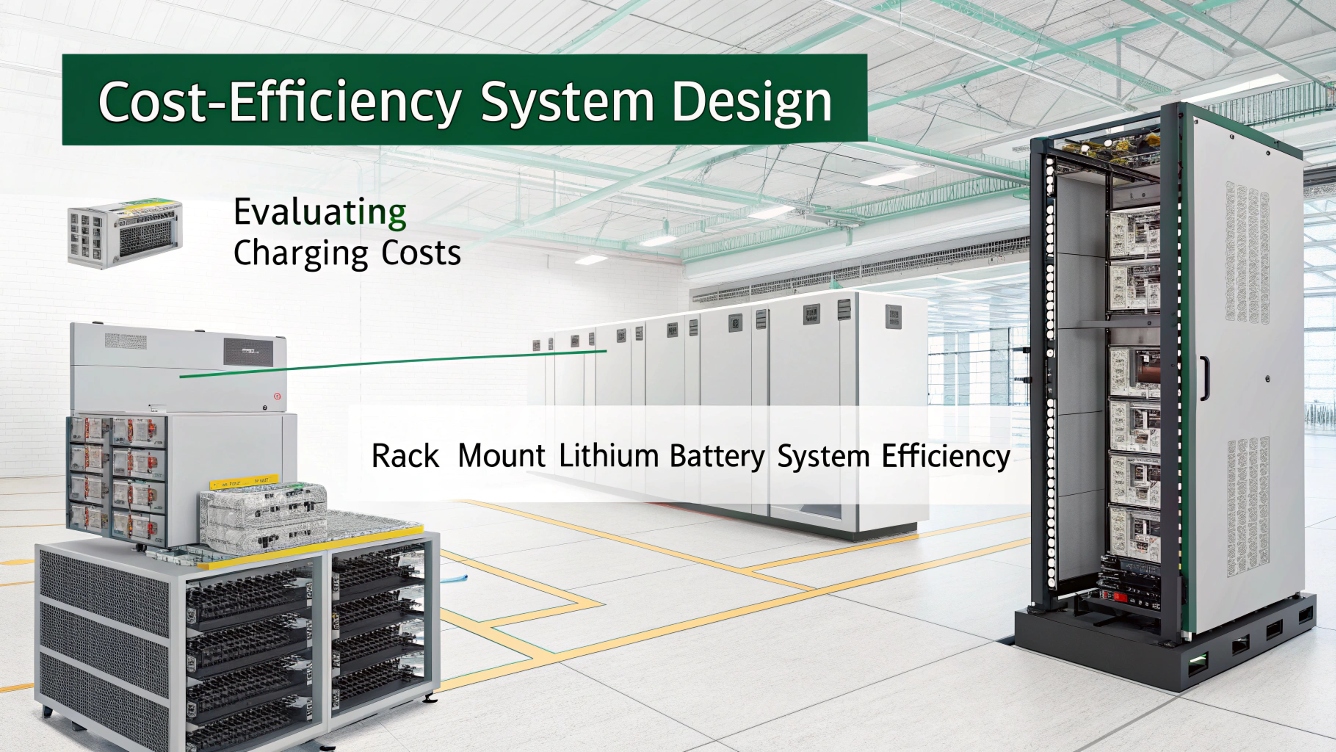
La progettazione dei sistemi di batterie svolge un ruolo cruciale non solo nelle prestazioni ma anche nell'efficienza dei costi e nella facilità di installazione. Nostro batteria al litio per montaggio su rack I sistemi sono progettati per la scalabilità e la facilità di integrazione, Ideale per entrambe le applicazioni a griglia e off-grid.
48Batteria al litio a supporto di rack: Efficienza in una forma compatta
Nostro 48Batteria al litio a supporto di rack offre una soluzione efficiente con un design compatto che massimizza lo spazio disponibile. Questo design riduce le perdite di energia minimizzando la lunghezza del cablaggio e i punti di connessione. La sua costruzione robusta è ideale per gestire i cicli di carica elevata e scarica associati a grandi sistemi di accumulo di energia.
Batterie al litio impilabili: Scalabilità modulare per lo stoccaggio di energia
Per coloro che necessitano di una soluzione flessibile ed espandibile, Nostro Batterie al litio impilabili fornire un approccio modulare. Il loro design ti consente di ridimensionare la capacità di stoccaggio in base alle esigenze energetiche in tempo reale, garantendo al contempo che ciascun modulo riceva un'efficienza di ricarica ottimale. Questo approccio può anche aiutare a bilanciare il carico complessivo e ridurre le perdite potenziali durante la ricarica.
Archiviazione della batteria impilabile: Soluzioni integrate per installazioni su larga scala
Nostro Archiviazione della batteria impilabile Il sistema è una soluzione completa di accumulo di energia che si integra perfettamente con i sistemi di alimentazione solare e di backup. Il design è focalizzato su perdite minime, raffreddamento efficiente, e un sistema di gestione della batteria intelligente (BMS) che ottimizza i cicli di ricarica.
Scomposizione del costo di ricarica: Un'analisi pratica

Abbattiamo il costo per caricare una batteria da 40kWh guardando i vari fattori di influenza e come interagiscono:
Analisi del consumo di energia
Come indicato, Il requisito energetico di base è 40kWh. Tuttavia, A causa delle inefficienze del sistema (assumere 90%), La batteria può richiedere quasi 44,4 kWh di energia per raggiungere la piena capacità.
Riepilogo del calcolo:
- Energia base: 40 kWh
- Regolato per l'efficienza: 40 kWh / 0.9 ≈ 44.4 kWh
- Costo per kWh (esempio): $0.15
- Costo di base: 44.4 KWH × $0.15 ≈ $6.66
Questo calcolo di base costituisce la fondazione, Ma le applicazioni del mondo reale hanno spesso ulteriori fattori che incidono su queste cifre.
Implicazioni del tasso di tempo
La ricarica durante le ore di punta a volte può dimezzare il costo per kWh. Per esempio, Se i tassi non di punta scendono a $0.10 per kWh, Il costo energetico adeguato diventa:
- 44.4 KWH × $0.10 ≈ $4.44
Impatto della manutenzione e dei costi operativi
Oltre il costo immediato dell'energia, manutenzione, e anche i fattori operativi contribuiscono alla spesa complessiva. Ad esempio:
- Degrado della batteria: Il ciclismo regolare può richiedere la manutenzione per sostituire o servire i componenti per tutta la durata della batteria.
- Investimento infrastrutturale: Il costo iniziale di configurazione del caricabatterie, cablaggio, e i sistemi di controllo aggiungono alla proposta di valore complessivo.
Questi fattori sono spesso ammortizzati nel corso della vita del sistema, impatto sul costo della proprietà a lungo termine piuttosto che il costo di ricarica istantaneo.
Integrazione dell'efficienza in termini di costi con la progettazione del sistema
Quando si valuta i costi di ricarica, è essenziale considerare come progetti avanzati come batteria al litio per montaggio su rack i sistemi possono mitigare alcune delle spese intrinseche. La loro ingegneria si concentra sulla minimizzazione della perdita di energia e sull'ottimizzazione dell'efficienza del sistema, che influisce direttamente sul costo per caricare una batteria.
Vantaggi dei sistemi di montaggio a rack
- Minore perdita di energia:
I design del supporto per rack compatti riducono l'elettricità a distanza deve viaggiare, abbassando così le perdite resistive. - Manutenzione semplificata:
I progetti modulari sono più facili da servire e monitorare, che migliora il tempo di uptime del sistema e riduce i costi di manutenzione. - Scalabilità migliorata:
Sistemi come il 48Batteria al litio a supporto di rack può essere ampliato all'aumentare dell'energia, Garantire che l'infrastruttura di ricarica si ridimensiona in modo efficiente.
Esempi del mondo reale
Molte installazioni hanno dimostrato che investire in qualità superiore, I sistemi di batterie efficienti possono portare a un notevole risparmio a lungo termine. Ad esempio, sistemi solari residenziali dotati del nostro batteria al litio per montaggio su rack Le configurazioni hanno registrato costi operativi più bassi per lunghi periodi. Gli studi indicano che la migliore efficienza di questi sistemi può ridurre le perdite di energia fino a 10% Rispetto alle configurazioni più tradizionali.
Dati delle prestazioni e approfondimenti del settore
Per darti un'immagine più chiara, Di seguito è riportata una tabella di dati di esempio che riassumi i parametri chiave relativi alla ricarica di una batteria da 40kWh:
| Parametro | Valore/osservazione | Spiegazione |
|---|---|---|
| Capacità della batteria nominale | 40 kWh | La capacità energetica nominale della batteria |
| Efficienza prevista | ~ 90% | Efficienza tipica del sistema contabile per le perdite |
| Requisito energetico rettificato | ≈44,4 kWh | Energia effettiva disegnata a causa di inefficienze del sistema |
| Costo per kWh (Picco) | $0.15 | Esempio di tasso di utilità durante le ore di punta |
| Costo per kWh (Fuori punta) | $0.10 | Tasso inferiore durante le ore di punta |
| Costo di addebito stimato | $6.66 (Picco), $4.44 (Fuori punta) | Calcolato in base all'efficienza e ai tassi di energia |
Questi valori sono indicativi e soggetti a modifiche in base ai tassi di utilità locali, Progettazione del sistema, e pratiche operative. Per approfondimenti tecnici sui chimici della batteria e la perdita di energia, Fare riferimento a Wikipedia Batteria agli ioni di litio pagina.
Considerazioni economiche e tendenze future
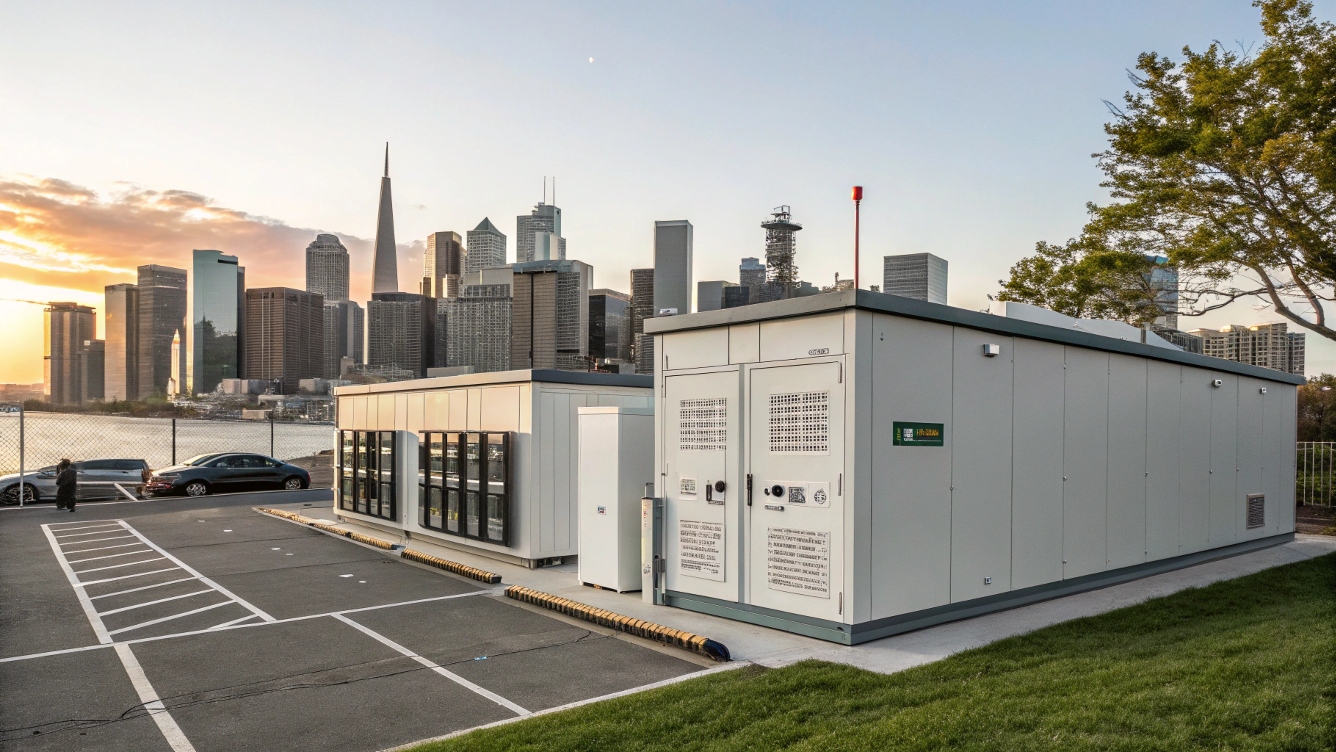
Man mano che la tecnologia della batteria si evolve, Sia il costo per caricare le batterie che l'efficienza dei sistemi di accumulo di energia continueranno a migliorare. Alcune tendenze notevoli includono:
Costi operativi ridotti
- Algoritmi di ricarica migliorati:
Progressi nei sistemi di gestione delle batterie (BMS) Abilita migliori regolamenti in tempo reale per la carica di corrente, ridurre la perdita di energia. - Integrazione della griglia intelligente:
L'integrazione con le reti intelligenti consente la ricarica automatizzata durante le tariffe disponibili più economiche, ridurre al minimo i costi operativi.
Durabilità migliorata e durata della vita
- Durata della batteria più lunga:
Protocolli di ricarica efficienti estendono la durata della batteria, Ridurre la frequenza e il costo delle sostituzioni. - Aggiornamenti del firmware regolari:
I sistemi moderni aggiornano spesso il loro software per ottimizzare le prestazioni, Garantire che sia la velocità di ricarica che l'efficienza dei costi migliorano nel tempo.
Sostenibilità e impatto ambientale
- Impronta di carbonio inferiore:
I metodi di ricarica ottimizzati riducono il consumo complessivo di energia, con conseguente minore impatto ambientale. - Riciclaggio ed efficienza delle risorse:
Man mano che i metodi di produzione migliorano, La quantità di materia prima necessaria per batteria diminuirà, Contribuire a un'economia energetica più sostenibile.
In sintesi, I vantaggi economici e ambientali dei sistemi di batterie avanzati, come quelli che utilizzano batteria al litio per montaggio su rack Tecnologia: fai loro un'opzione interessante per le soluzioni di accumulo di energia attuali e future.
Casi di casi nel mondo reale
Consideriamo uno scenario del mondo reale: Una piccola impresa in un'area metropolitana installa un sistema da 40 kWh per fungere da energia di backup. Caricando questa batteria durante le ore di punta utilizzando un efficiente 48Batteria al litio a supporto di rack sistema, ottengono risparmi significativi sulle bollette dell'elettricità. Non solo il sistema fornisce energia di backup affidabile, Ma il suo design modulare (Via Batterie al litio impilabili E Archiviazione della batteria impilabile) consente un'espansione futura con costi di infrastruttura aggiuntivi minimi.
Breakdown di esempio
Setup iniziale:
L'azienda investe in un robusto sistema di montaggio rack che si integra perfettamente con il loro array solare esistente.Strategia operativa:
La ricarica è programmata automaticamente durante le ore di punta, Garantire i costi energetici più bassi.Manutenzione e monitoraggio:
Il BM avanzato monitora le prestazioni del sistema, Pianificazione della manutenzione e previsione della sostituzione delle parti con largo anticipo.
Tali casi studio evidenziano il ruolo significativo che la progettazione del sistema e le strategie di ricarica intelligenti svolgono nel ridurre il costo complessivo della proprietà e delle spese operative nel tempo.
Conclusione
La carica di una batteria da 40kWh comporta molti strati di costo, dal prezzo di base dell'elettricità per l'efficienza operativa e la progettazione di sistemi intelligenti. Comprendendo questi fattori, Le parti interessate possono prendere decisioni più informate che garantiscano sia l'efficienza economica che le prestazioni migliorate.
Soluzioni moderne di accumulo di energia, in particolare quelli basati su batteria al litio per montaggio su rack sistemi, offrire un chiaro vantaggio. Il loro design compatto, ridotte perdite di energia, e integrazione scalabile (attraverso prodotti come 48Batteria al litio a supporto di rack, Batterie al litio impilabili, E Archiviazione della batteria impilabile) Rendili una scelta ideale per chiunque cerchi di sfruttare l'energia rinnovabile mantenendo il controllo stretto sui costi.
A GYCX solare, Ci impegniamo a fornire avanzato, efficiente, e soluzioni di batteria sostenibili. I nostri prodotti incarnano l'avanguardia nella progettazione modulare e nell'ottimizzazione dell'energia, Garantire che i clienti residenziali e commerciali ottengano il massimo da ogni chilowattora. Man mano che i mercati energetici si evolvono e l'efficienza diventa sempre più critica, Investire in sistemi di batterie di alta qualità oggi aprirà la strada a un domani più resiliente ed economico.

